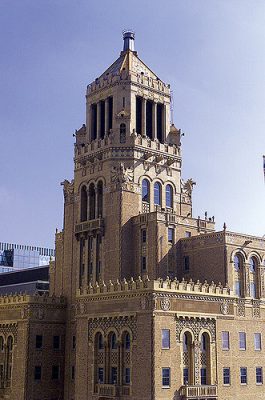As DMC’s momentum continues, words like “urbanism,” “prototyping,” and “placemaking” are becoming increasingly more common in everyday conversations around Rochester, but with May as National Historic Preservation Month, there exists an opportunity to celebrate the special places that have helped shape our history and culture, making Rochester the medical destination it is today.

Sponsored annually by the National Trust for Historic Preservation since 1973, National Historic Preservation Month is designed to raise awareness about how historic preservation helps to protect and enhance our communities and, with the DMC initiative, Rochester has a rare opportunity to explore and preserve its heritage.
Jane Bisel is a principal at Blue Planet Museum Consulting and a local advocate for historic preservation. “As we endeavor to offer improved quality of life for residents, and appeal to increasing numbers of visitors, a large part of our task is to recognize the things that distinguish our city from others, and to celebrate them as part of its unique character,” she explains. She cites downtown Rochester, with its diversity of buildings, as a great example. “It speaks of Rochester’s development – from a commercial center for the surrounding agricultural community to the increasingly cosmopolitan science and technology center it’s becoming.”
From the standpoint of heritage preservation, John Kruesel also feels the DMC initiative’s timing is fortuitous. “With growing national awareness of the environmental benefits of conserving old buildings, and the role that local landmarks play in creating and maintaining a sense of community, historic preservation is becoming a larger field with more accessible expertise,” Kruesel says.

If you’re looking for ways to celebrate National Historic Preservation Month or simply hoping to better understand the power and potential of historic structures and sites in and around Rochester, Bisel and Kruesel mention a few must-see sites:
- Mayo Clinic’s Plummer building. “An observant person will notice a different interesting feature
with every trip.” - The Maass and McAndrew building (now more commonly known as the Conley-Maass building). “It has a surprisingly rich industrial past and is on its way to becoming an exciting place to work and gather in a post-industrial era.”
- The Chateau Theater. “It’s journeying toward new uses that will continue its history of inspiring and uplifting the public.”
Bisel and Kruesel also mentioned downtown’s Historic Third and the “elegant colonial revival barn just a block east of South Broadway,” which they explain was designed by Harold Crawford for the prize-winning Percheron birds of Graham Park founder Dr. Christopher Graham. They described the former Carleton Hotel and the Travelers’ hotels, which they describe as “equally important to our story.”

As the city and DMC look toward Rochester’s future, the preservation of significant landmarks will remain an important part of embracing city’s historic fabric and efforts to collaborate with federal agencies, state agencies, and local organizations to develop strategies and programs to spur historic preservation in the DMC District will remain a priority.
—
“Heritage preservation is important because the unique character of the city of Rochester is a tapestry of more than one hundred fifty years of contributions by energetic, creative, and caring citizens. It is critical to honor and preserve the tangible legacies of our forebears by telling their stories, reusing and repurposing their edifices and directing our new growth to blend harmoniously with our past. In addition, the proven economic, civic pride and environmental benefits associated with adaptive reuse and preservation are critical factors that cannot be underestimated. While the soul of our community is more than bricks and mortar, the bricks and mortar tend to connect us with each other and past generations in a reassuring way.” – John Kruesel